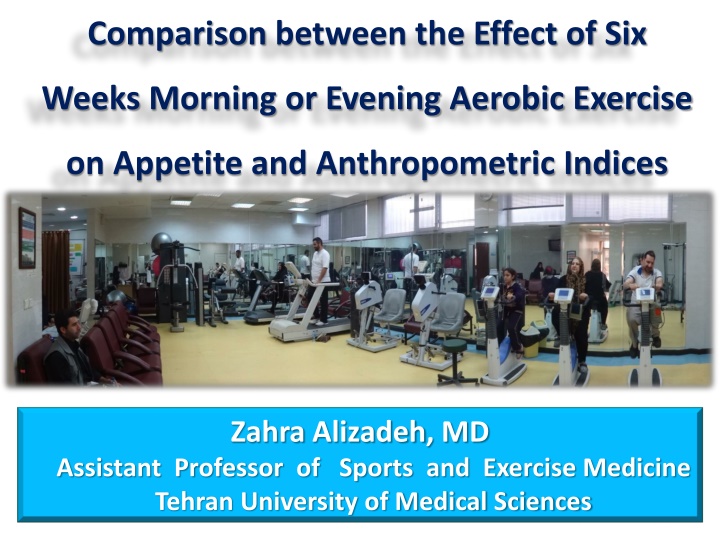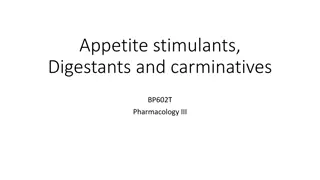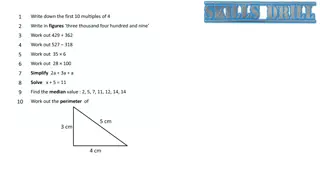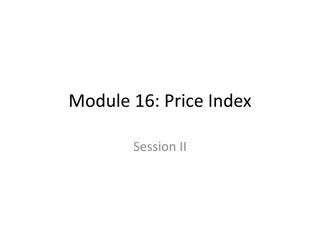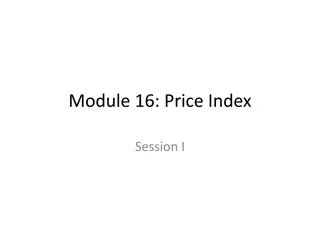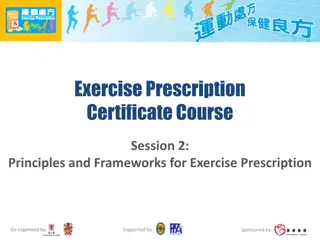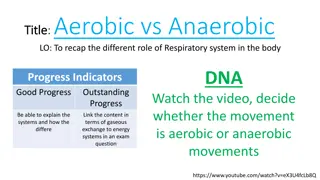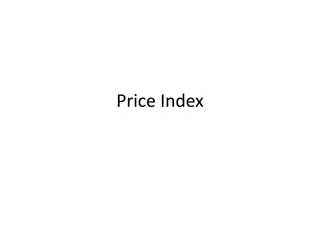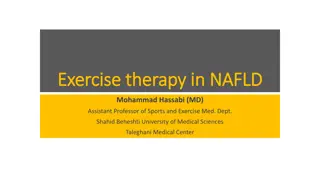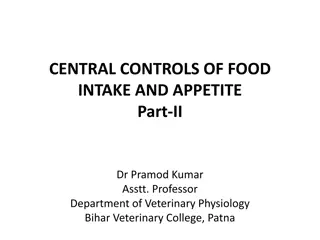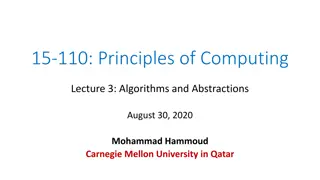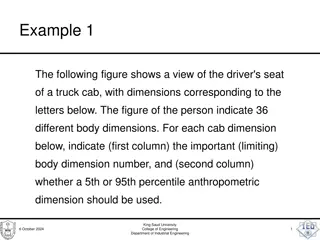Effect of Six Weeks Morning or Evening Aerobic Exercise on Appetite and Anthropometric Indices
This study by Dr. Zahra Alizadeh explores the impact of six weeks of morning or evening aerobic exercise on appetite and anthropometric indices in overweight females. The research aims to understand how exercise timing affects these factors in sedentary overweight women aged 20-45, excluding those with specific health conditions. Various measurements and analyses were conducted before and after the exercise intervention to evaluate changes in weight, body composition, and other indices.
Uploaded on Oct 04, 2024 | 2 Views
Download Presentation

Please find below an Image/Link to download the presentation.
The content on the website is provided AS IS for your information and personal use only. It may not be sold, licensed, or shared on other websites without obtaining consent from the author.If you encounter any issues during the download, it is possible that the publisher has removed the file from their server.
You are allowed to download the files provided on this website for personal or commercial use, subject to the condition that they are used lawfully. All files are the property of their respective owners.
The content on the website is provided AS IS for your information and personal use only. It may not be sold, licensed, or shared on other websites without obtaining consent from the author.
E N D
Presentation Transcript
Comparison between the Effect of Six Weeks Morning or Evening Aerobic Exercise on Appetite and Anthropometric Indices Zahra Alizadeh, MD Assistant Professor of Sports and Exercise Medicine Tehran University of Medical Sciences
Introduction In recent decades, obesity has become a major health problem. So far, several studies have showed that exercise is related to creating negative energy balance and changes in appetite directly. However, few of the studies examined the effect of exercise time during the day on these factors.
Objectives The aim of the present study was demonstrating the effect of 6 weeks morning or evening aerobic exercise on appetite and anthropometric indices
Methods Inclusion criteria: 20-45-year-old sedentary overweight female subjects; not suffering from cardiovascular, pulmonary, metabolic diseases or musculoskeletal problems ; not taking any medication affecting heart rate, blood pressure, exercise capacity or appetite suppressors ; and not being pregnant.
Methods Exclusion criteria: pregnancy during the intervention; musculoskeletal problem during the exercise sessions; and refusal to participation in the study.
Methods Forty-eight overweight females were recruited in this clinical trial
Methods After inclusion in the three visits, Informed consent were completed; Healthy nutrition were educated; Anthropometric measurements including height, waist circumferences, abdominal and suprailiac skin fold thicknesses were determined.
Methods After inclusion in the three visit, Weight, PBF and SLM were calculated using Body Impedance Analyzer (AVIS33 body composition analyzer, Jawon Medical Co. Ltd, South Korea);
Methods After inclusion in the three visit, Exercise test for determination of the maximal heart rate and ventilatory threshold (VT) were done by the gas analysis device (Quark CPET, COSMED, Italy).
Methods By the time of exercise, the participants were divided randomly into two groups (morning 8-10 AM or evening 2-4 PM) and performed 6 weeks supervised aerobic exercise on treadmill in the obesity clinic (30 minute/session) with the target heart rate on the ventilatory threshold.
Methods In three time points (at baseline and in the third and the sixth week of the trial), 24 hours food consumption was recorded before and after exercise session,
Methods In three time points (at baseline and in the third and the sixth week of the trial), The appetite visual analogue scale was completed before the exercise session and 15 minutes after that in order to estimate the level of prospective food consumption, fullness, hunger, satiety and the desire to eat savory, sweet, salty and fatty foods.
Methods All of the variables (Appetite changes, calorie intake, and anthropometric indices) were compared between two groups and within groups at baseline, in the third and sixth week.
Recruitment n = 48 Exercise Test and primary measurements, n = 48 Morning exercise, n = 25 Evening exercise, n = 23 Starting supervised evening exercise Starting supervised morning exercise , n = 25 n = 20, 3 = dropped out Mid trial measurements Mid trial measurements n = 19, 1 = dropped out n = 23, 2 = dropped out End trial measurements End trial measurements n = 16, 3 = dropped out n = 21, 2 = dropped out
Results Significant differences were not seen in the parameters evaluated at baseline between two groups.
Anthropometric outcomes over time in the morning and evening exercise groups Assessment time points Week 3 Variables Baseline Week 6 P-value Weight, kg 0.04 Morning exercise group* 71.71 (1.32) 70.72 (1.32) 70.16 (1.38) Evening exercise group 71.77 (1.62) 71.49 (1.68) 71.49 (1.69) BMI, kg/m2 0.04 Morning exercise group* 27.29 (0.31) 26.91 (0.31) 26.69 (0.33) Evening exercise group 27.57 (0.32) 27.46 (0.34) 27.47 (0.38)
Anthropometric outcomes over time in the morning and evening exercise groups Assessment time points Variables Baseline Week 3 Week 6 P-value Body fat, % 0.26 Morning exercise group * 35.71 (0.38) 35.08 (0.39) 34.60 (0.43) Evening exercise group * 35.71 (0.53) 35.27 (0.55) 35.12 (0.57) Lean body mass, % 0.27 Morning exercise group * 64.29 (0.38) 64.92 (0.39) 65.40 (0.42) Evening exercise group * 64.28 (0.53) 64.73 (0.55) 64.88 (0.57) Soft lean mass, % 0.25 Morning exercise group * 58.64 (0.38) 59.25 (0.39) 59.75 (0.42) Evening exercise group * 58.65 (0.52) 59.10 (0.54) 59.24 (0.56)
Anthropometric outcomes over time in the morning and evening exercise groups Assessment time points Variables Baseline Week 3 Week 6 P Abdominal circumference, cm 0.60 Morning exercise group * 95.40 (1.00) 94.73 (1.06) 93.90 (1.03) Evening exercise group 96.47 (1.64) 96.49 (1.77) 95.80 (1.81) Abdominal skinfold thickness, mm 0.21 Morning exercise group * 36.92 (1.81) 35.23 (1.46) 33.66 (1.04) Evening exercise group 33.61 (1.16) 32.99 (1.27) 33.36 (1.12) Supra-iliac skinfold thickness, mm 0.13 Morning exercise group 33.48 (1.59) 33.06 (1.50) 31.44 (1.52) Evening exercise group 35.26 (2.23) 33.05 (1.65) 32.84 (1.70)
Results Consistent changes in the appetite scores were not found along the 6 weeks (P > 0.05)
Results Calorie consumption of the morning group decreased along the 6 weeks significantly greater than that of the evening group (P= 0.02).
Summary of 24-hour food records over time in the morning and evening exercise groups Assessment time points Week 3 Variables Baseline Week 6 P-value Total energy intake, kcal 0.02 2049.45 1714.99 1687.13 Morning exercise group* (115.58) (79.87) (128.07) 1897.74 1982.80 1869.55 Evening exercise group (93.49) (84.29) (147.89)
Discussion: Anthropometric outcomes A large body of studies have demonstrated the effect of exercise on weight and PBF reduction. But there is no evidence to compare the effect of time of exercise during the day on body composition.
Discussion: Anthropometric outcomes However, in the present study, the time of exercise during the day could induce some different effects on weight and body composition of the subjects.
Discussion: Appetite and desire scores for specific food types To the best of our knowledge Maraki et al. experience is the only study to investigate the effects of morning versus evening exercise on appetite indices. They analyzed the effect of single exercise trial on 12 normal weight women in two different times of the day.
Discussion: Appetite and desire scores for specific food types They showed that exercise, regardless of the time, could decrease satiety and fullness significantly. But prospective food consumption (PFC) and hunger enhanced in both groups, without significant differences between the two.
Discussion: Appetite and desire scores for specific food types However, the results of the Maraki study were inconsistent with the previous studies many of which have showed that exercise, apart from exercise time during the day, has no effect on appetite indices or food consumption after exercise.
Discussion: Appetite and desire scores for specific food types This contradiction could be explained by the exercise program and the assessment time of appetite in the participants.
Discussion: Appetite and desire scores for specific food types Neither did we find consistent changes in the appetite scores along the 6 weeks. Moreover, the transient changes in appetite indices were not significant between the two groups.
Discussion: Outcomes of 24-hour food records There are plenty of studies that have investigated the effect of high or moderate intensity aerobic exercise on calorie intake in short time.
Discussion: Outcomes of 24-hour food records According to the existing evidence, energy intake after exercise does not increase remarkably, so absolute energy intake decreases. However, some studies reported significant increase or decrease in calorie intake after physical activity. These differences could be concluded due to exercise intensity or duration of the trials.
Discussion: Outcomes of 24-hour food records In sum, according to the present study, moderate to high intensity aerobic exercise leads to negative energy balance with further effect of morning time in comparison to evening. Further studies are needed to prove the effect of exercise time on calorie intake and probable mechanisms such as increasing control on intake and post exercise oxygen consumption, etc. in morning time exercise.
Conclusions It seems that moderate to high intensity aerobic exercise in the morning along 6 weeks could be considered as a more effective program than evening exercise on appetite control, calorie intake, and weight loss in overweight female subjects
Thank you for your attention E-mail: z_alizadeh@tums.ac.ir
